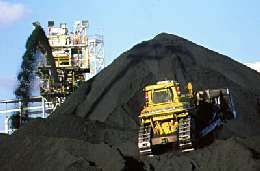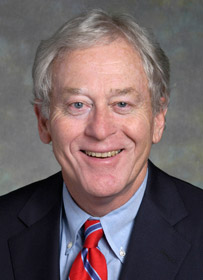Earthquake in New Jersey?
December 2nd, 2010
This is the “artist’s conception” of the PurGen coal gasification plant proposed for Linden, New Jersey.
Last week there was an earthquake just off the cost of New Jersey and New York:
Small earthquakes in N.J. prompt calls to police, but no reported damages
The US Geological Survey has a site to report earthquakes:
What does this Linden coal gasification plant have to do with an earthquake? Well DUH, PurGen wants to pump the earth full of CO2. They claim that “Carbon dioxide will then be removed from the gas and safely stored offshore in a permanent repository.”
In support of this nonsense, they’re trotting out our friend from the Mesaba Project, Dan Schrag:
For information on impact of gas storage on seismic activity, check out “Gas Migration” which is THE source for the real poop. In short, pumping the earth full of gas, i.e. CO2, triggers seismic activity, CCS = earthquakes.
What’s interesting to me is that this is the second time this year for New Jersey:
Earthquake Jolts New Jersey
By Therese Crowley
2/22/2010BERNARDSVILLE, NJ – Sunday morning reverie at 8:59 a.m. was punctuated by a big BOOM in Bernardsville- and Basking Ridge- and at least 25 more zip codes, according to the US Geological Survey. Within an hour, an earthquake measuring 2.6 on the Richter scale was confirmed by the Lamont Doherty cooperative Seismographic Network (LCSN). The quake was centered at Peapack and Gladstone, New Jersey, 13 miles WSW of Morristown.
In Bernardsville, the quake was experienced as a ‘boom. BOOM!!! shake.’ In this reporter’s old stone cottage, the shaking rang bells. The quake shook Bernardsville Police headquarters, where Dispatcher 35 was fielding calls from residents, and cautioning that an aftershock may follow. Some 100 residents called in the first hour. No damage was immediately reported, although an earthquake of mild magnitude can cause hairline cracks in structures.
The region sits on the Ramapo Fault Line, and Lamont Doherty estimates the depth of the quake at 3.1 miles, measuring the impact as mild, at ll-lV level intensity. Still, residents were excited and rattled. The first aftershock followed at 12:31pm, measuring 2.3 on the Richter scale. As with the original quake, the first alert of something happening within the earth was a booming rumble, followed by a shaking sensation. The first aftershock was centered just one mile from the morning tremor.
The quake was the talk of the Somerset Hills YMCA; many people felt it, but few had heard confirmation of the event. One Dad reported, ‘We were watching TV with the kids and heard the boom—I made them turn the TV down, and we listened and felt the shake. It was something!’
The Sunday morning earthquake follows a series of tremors that moved the ground in Far Hills and Bernardsville from Friday, February 5th to Sunday, February 7th. One of those quakes measured 1.2, but Sunday morning’s 2.6 is orders of intensity greater.
An aftershock took place around 12:30 p.m. on Sunday measuring 2.3 on the richter scale.
Residents who would like to report their experience can go to the US Geological Survey Website and fill out the ‘Did You Feel It?’ form, at http://earthquake.usgs.gov/earthquakes/dyfi/
Excelsior Energy stalling payment to IRR… AGAIN
August 18th, 2010
.
As inevitable as the tide, the Minnesota winter snows, mosquitos, death and taxes… This is way too predictable! Charlotte Neigh, of Citizens Against the Mesaba Project, is dead on again with her trajectory of Excelsior Energy’s weaseling out of their financial responsibilities in this Mesaba Project boondoggle. A deadline is approaching where Excelsior Energy has to make a payment on its financing from the Iron Range Resources Board:
MCGP Exhibit 5023 – IRR & Excelsior Convertible Debenture Agreement
A little birdie just sent this, literally hours after Charlotte had mentioned that the next payment was coming due and wondering what they were going to pull this time to get out of it (it’s ALWAYS something):
Excelsior asks for more time to repay Iron Range loans
IGCC taking some twisted turns…
August 11th, 2010
There’s been change afoot as the facts of the infeasibility of CO2 capture and storage filters up to the higher regions of the cesspool, and as the financing nightmares and high capital costs of IGCC are paraded in public as the Indiana Duke IGCC project moves forward, and as, of course, the DOE’s EIS (here’s the DOE’s project page) for Excelsior Energy’s Mesaba Project drags on and on and on as the agency refuses, thankfully, to issue the Record of Decision on that… and slowly, painfully slowly, the truth about this IGCC pipedream is coming out.
A few telling tidbits, first, that they’ve given up on FutureGen IGCC, YEAAAAAAAAA:
DOE to provide $1B to revamped FutureGen
This study was released last June, which shows that leakage of CO2 is a major problem, and which makes sequestration not feasible:
Long-term Effectiveness and Consequences of Carbon Dioxide Sequestration – Shaffer
Can’t have information like that getting out, so USA Today, of course, plays it with the following headline — DUH, of course critics pan the study — and this is the best they could come up with and it took two months!
Critics question carbon storage study
CATF wants federal PPA?
July 12th, 2010
Oh, how bizarre can it get. Sometimes, I’m left speechless in disbelief. We all know about Clean Air Task Force’s toadying for coal, they’re the Clean Air Task FArce, but this? It’s just going too far.
CLEAN AIR TASK FORCE THINKS THE FEDS SHOULD SIGN A PPA FOR FUTUREGEN ELECTRICITY!
Really, here’s a quote from the Press Release:
And I’m sure that Tom Micheletti, of Excelsior Energy/Mesaba Project infamy, is not happy about this, not happy about it because they’re proposing the FutureGen and not Mesaba:
IGCC plants have problems getting Power Purchase Agreements because they are NOT economical, even with all the federal and state subsidies, with all the perks, with all the circumvention of regulation, as the ALJ’s noted in their Recommendation to the PUC on the Mesaba Project PPA, it’s just TOO COSTLY! And, plus, it’s NOT in the public interest!
But there goes Clean Air Task Farce saying the feds, US, we the taxpayers, should buy up the FutureGen electricity? Give me a break! Really, here it is from the horse’s mouth(the other end of the horse is further below) — this CATF press release just out:
REPORT CALLS FOR COMPREHENSIVE ARRAY OF NEW DEMONSTRATION PLANTS, $20 BILLION IN NEW FUNDING
Here’s the entire CATF report:
Contact the White House, Executive Office of the President, and tell the staff what you think of CATF’s brilliant idea and what you think of CATF’s lobbying for coal:
And this article about it:
Expert: Feds should buy FutureGen’s power output
Byron Starns on both sides of the fence
July 6th, 2010
I’ve just by utter accident discovered a few things…
We all remember Byron Starns, attorney for Excelsior Energy’s Mesaba Project, the coal gasification project from hell. Check his bio – CLICK HERE – he’s done some amazing things, that Reserve Mining case in particular.
Now let’s take a walk back on memory lane, the 2003 Prairie Island bill, where the “Environmental Coalition”, i.e., Izaak Walton League, MCEA, ME3/Fresh Energy, and Xcel and Tom Micheletti did a deal that advance wind some, let Xcel continue using Prairie Island and increased cask storage, and opened the door for Micheletti’s Excelsior Energy and their IGCC plant that they’d been promoting since the 2002 session. On one hand, the “Environmental Coalition” including MCEA, in the middle we have Xcel, and on the other we have Tom Micheletti and Excelsior Energy…
Here’s the 2003 Prairie Island bill:
Minnesota Session Laws 2003 – 1st Special Session, Chapter 11
Here’s what it did for Mesaba (as if calling burning garbage “renewable” wasn’t enough):
Excelsior Energy Mesaba Project related parts of 2003 Chapter 11
When the Power Purchase Agreements for Excelsior Energy’s Mesaba Project came up at the PUC, MCEA intervened, both as a party and representing others:
To look at the full docket, go to www.puc.state.mn.us and “Search Dockets” and search for PPA docket “05-1993” and Siting docket “06-668.”
And look who filed a Notice of Appearance for Excelsior Energy dated April 27, 2006:
And representing Excelsior Energy in the Siting Docket dated September 26, 2006:
And look who is noted in the MCEA Annual Reports as providing legal services to MCEA in 2005 and 2006, look in the fine print, why it’s Byron Starns!
Oh, but that’s not all, look who joins the Board of MCEA in 2007 … and remains through 2008… and 2009 according to his bio on the LSD site — why, it’s Byron Starns again!:
Board of Directors, Minnesota Center for Environmental Advocacy, 2007–2009 (linked)
His bio states he was on the MCEA board in 2009, but the 2009 IRS 990 does not list him as having been on it at reporting year end.
I just spoke with Byron Starns, who, with the forwarning to don his Kevlar vest, was kind enough to entertain a few questions, and said that (close to quotes but not quite):
MCEA has an ethical requirement, that everyone on the Board must make full disclosure of interests and conflicts, and that when issues do come up, anyone with a conflict has to leave the room. He said he didn’t participate in any decisions related to energy matters for MCEA. He does not recall if the fact that he was on MCEA’s board was disclosed in the Excelsior Energy Mesaba Project PPA or Siting dockets. Also, he noted he is no longer on the Board of MCEA.
I don’t recall any disclosure about this — do you?
Is it “not a conflict” because MCEA’s interests and the interests of their “clients” the Waltons and Fresh Energy are so closely aligned with those of Excelsior Energy because of that 2003 agreement?






